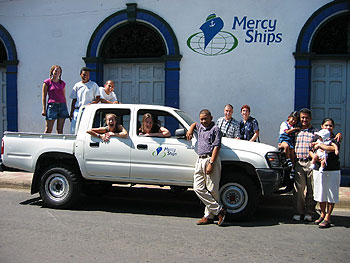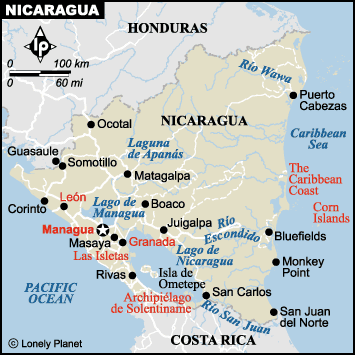Several have asked what they could do to support my trip and the mission in Nicaragua.
For the Staff and Mission of Mercy Ships Nicaragua
The staff at Mercy Ships Nicaragua are all volunteers and do not receive a salary. Each staff member is required to set up a support base of individuals or churches to provide monetary and prayer support.
However, donations for the base and ministry are always a blessing. Following is a list of items that would be appreciated:
* Flashlight bulbs
* Batteries (all sizes)
* Duct tape/packing tape
* Sheets and towels
* Yellow legal pads
* Polaroid film
* Pens, pencils, markers
* Toothpaste, Tooth brushes, dental floss
* Soap, shampoo, deodorant
* Vitamins (adult and children), iron supplements, pre-natal
* Over-the-counter cold/cough medications
* Trip-antibiotic cream, anti-fungal cream, hydrocortisone cream
* Tums
* Feminine Hygiene Products
* Chocolate chips, peanut butter (smooth and crunchy), microwave popcorn, nuts, muffin/brownie/cake mixes (all hard to get or very expensive).
* Baby/Kids clothes and shoes
* Baby items (cloth diapers, pins, wipes, powder, diaper rash ointment)
* Craft items, face paint, coloring books, crayons, stickers, finger paint
* Spanish evangelism material, Bibles
* Reading material for the staff (current magazines, books, etc.)
I am more than willing to transport donated items with me. I am allowed two suitcases up to 70 pounds each.
Support For Me
* Continued prayers for safe travel and good health
* Monetary gifts (appreciated but not required)
* Reading The Nica Report for updates
* Making sure Graeme and the kids stay out of trouble while I'm away (smile)!
You may contact me in my comments or by email (marieedmondson at yahoo dot com) to coordinate donation pick up. You may also leave donations with the office staff at First Baptist Sacramento.
Remember, I fly out May 1st (actually leaving Sacramento 4/30), so I will need to have all items to me by Wednesday, April 28th.


